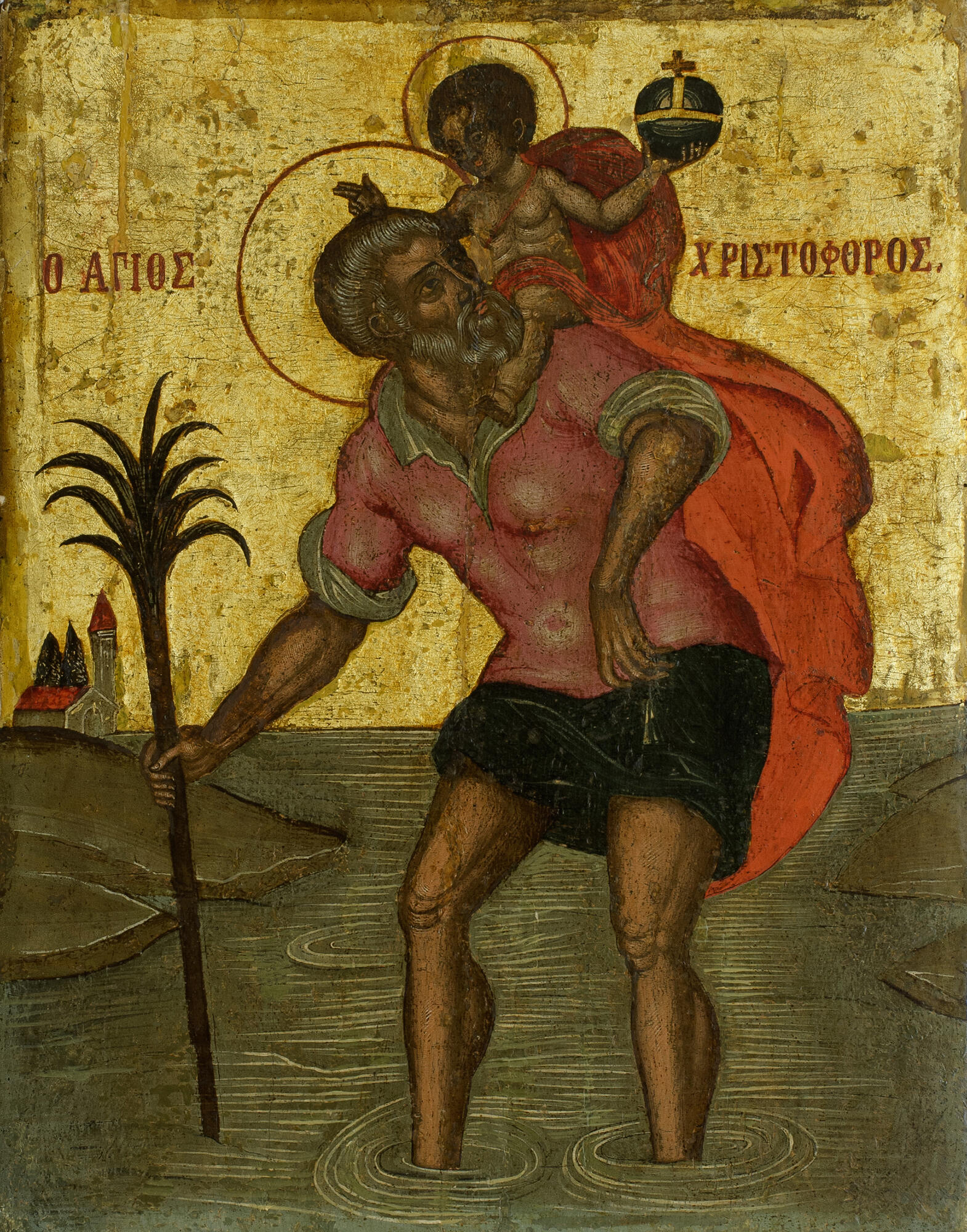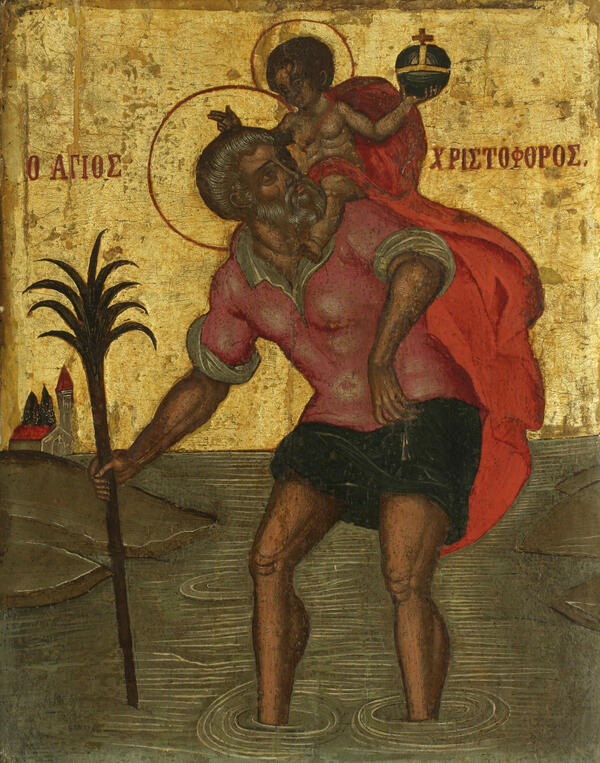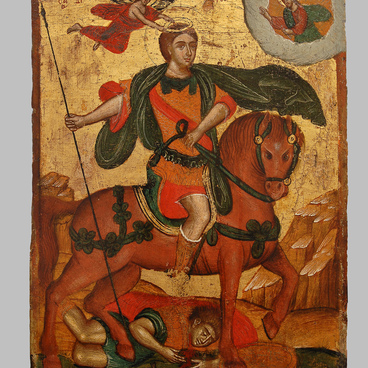The Primorye State Art Gallery houses an icon “Saint Christopher” by an unknown 17th-century master. Presumably, this is a work of the Cretan iconography.
Cretan icons are rather chaste in their composition; religious scenes avoid magnificent settings: buildings, landscapes, and all other elements have simple shapes. The shadows are laid out with brown paint, and only after that, the prominent parts are made with yellow, red, or pale ocher. The affiliation of the work with Cretan iconography is supported, among other things, by the fact that the clothes of Christopher and Christ are painted in the typical colors of Cretan icons.
In the Western tradition, Christopher is always depicted on canvases as a giant carrying Christ in the form of a baby and holding a branch, a tree, or a blossoming staff. Many famous 15th-century artists used this plot in their works, including Hieronymus Bosch, Domenico Ghirlandaio, Hans Memling, and Konrad Witz. Besides, the image of Christopher was used in sculpture, and coins were minted with his face.
According to one version, Christopher was initially called Reprev (from Latin “Reprobus” — “outcast, condemned, bad”), or Offero. He was of gigantic stature and was looking for the most powerful ruler to enter his service. First of all, he came to the service of a king, but the latter was afraid of the devil. Then the giant wanted to serve the devil, but it turned out that the devil was not omnipotent, as he was scared at the sight of a cross, which meant that Christ was the strongest. Reprev wanted to find and serve him, but it was not easy, and he went into the service of a holy hermit in the hope that Christ himself would appear to him one day.
The giant was strong and, at the behest of the hermit, began to carry travelers across a perilous river day after day. One day, carrying a little boy across the river, the giant realized that it had become incredibly difficult for him. Then the boy confessed that he was Christ, and it was hard for Reprev because Christ carried with him the burdens of the whole world. In the river, Christ baptized the giant and gave him a new name — Christopher, which means “carrying Christ”, after which he told him to stick his staff into the ground. The next day, the staff blossomed.
Cretan icons are rather chaste in their composition; religious scenes avoid magnificent settings: buildings, landscapes, and all other elements have simple shapes. The shadows are laid out with brown paint, and only after that, the prominent parts are made with yellow, red, or pale ocher. The affiliation of the work with Cretan iconography is supported, among other things, by the fact that the clothes of Christopher and Christ are painted in the typical colors of Cretan icons.
In the Western tradition, Christopher is always depicted on canvases as a giant carrying Christ in the form of a baby and holding a branch, a tree, or a blossoming staff. Many famous 15th-century artists used this plot in their works, including Hieronymus Bosch, Domenico Ghirlandaio, Hans Memling, and Konrad Witz. Besides, the image of Christopher was used in sculpture, and coins were minted with his face.
According to one version, Christopher was initially called Reprev (from Latin “Reprobus” — “outcast, condemned, bad”), or Offero. He was of gigantic stature and was looking for the most powerful ruler to enter his service. First of all, he came to the service of a king, but the latter was afraid of the devil. Then the giant wanted to serve the devil, but it turned out that the devil was not omnipotent, as he was scared at the sight of a cross, which meant that Christ was the strongest. Reprev wanted to find and serve him, but it was not easy, and he went into the service of a holy hermit in the hope that Christ himself would appear to him one day.
The giant was strong and, at the behest of the hermit, began to carry travelers across a perilous river day after day. One day, carrying a little boy across the river, the giant realized that it had become incredibly difficult for him. Then the boy confessed that he was Christ, and it was hard for Reprev because Christ carried with him the burdens of the whole world. In the river, Christ baptized the giant and gave him a new name — Christopher, which means “carrying Christ”, after which he told him to stick his staff into the ground. The next day, the staff blossomed.



